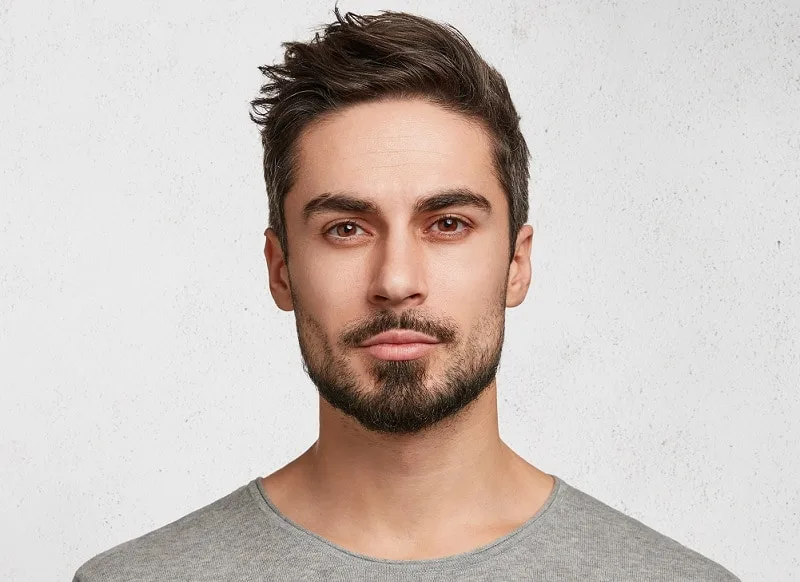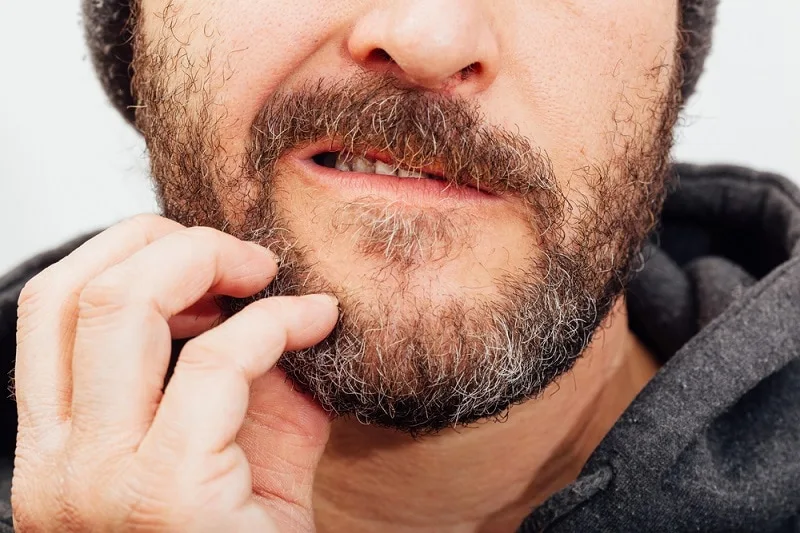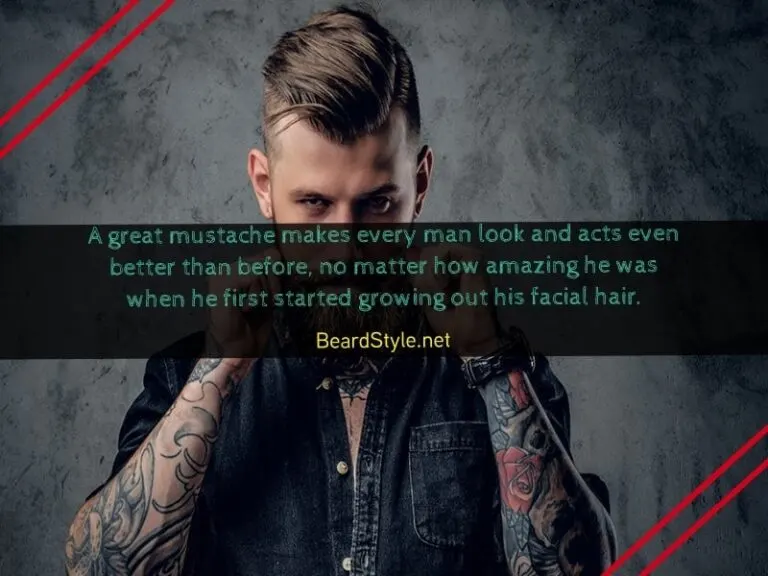1-Month Stubble Beard: Guide to Grow, Maintain & Style
You either have been thinking of keeping a beard or you have been growing it for a whole month now. You might be new at this and you don’t know if you want to commit. Either way, the 1 month beard has led you into a path of self-exploration. self-awareness, and curiosity.
For anyone who’s starting out, you’ve started realizing how keeping a beard can be a part of your identity and the way you style it is your personal expression. It could also be daunting given that the 1 month beard can cause problems that you didn’t have before. That’s where this article comes in to make your path of self-discovery easier and help you decide.
Who Should Try 1-Month Beard?

The 1 month stubble beard is perfect for those who are completely new at growing and keeping a beard. It is one of the easiest to grow and takes the least amount of time and effort. It does come with its own problems but it sets you up with some experience and helps you decide if you want to keep it growing.
The first thing you should know is that it’s also known as “the awkward beard”. The awkward phase is unavoidable regardless of your beard growth rate. For most people, it doesn’t look good the first month. It’s a weird place to be in.
Before you start worrying about all of the things we’ve talked about, you should know that things like your facial hair growth rate, the type of beard you grow and where you grow it on your face have a lot to do with genetics. And with the help of some techniques, creativity and expertise, you could change or circumvent most of the issues you come across as you go along and we’ll talk about all of that in this article.
For those who have slow beard growth, you can probably grow at least 1-inch of beard in a month. Those with faster growth will definitely outgrow the 1-inch mark.
A full beard should have hair all over the cheek, neck and jaw. It’s going to look unkempt and messy due to some hair being longer than others. Those with a patchy beard will have more skin showing around the cheeks and neck but more hair around the mustache and chin area.
A Month Old Beard Examples
1. Thick Beard

This is a good example of when someone has an exceptional growth rate and coverage of their beard. This helps to style your beard however you want.
2. Patchy Beard

Patchier beards will look like this. It may look unkempt but growing those patchy beards will make you look good if you keep at it for 3 to 6 months.
3. Full Coverage Beard

If this is how your beard looks, you should consider yourself lucky as this means you have good coverage all around the face. Give it a few months and you should have an amazing full beard at the end.
The point is, you shouldn’t get discouraged if you think the beard isn’t looking good. It’s only been a month and you should keep at it.
The Itch & the Flaky Skin

For first-timers, the first thing they notice is how much their face itches when they start growing a beard. A lot of people have itching around their neck as well.
One of the reasons for this is as your facial hair grows it has a pointy end that curls up around your skin. If this is the case, you just have to be patient. Once it crosses a certain length, the pointy part of your facial hair won’t be touching your skin.
Another reason for the itch could be bad or flaky skin. You’ll know flaky skin when you see one since they’ll look like dead skin cells. These dead skin cells will fall down as you scratch your face. This is because sometimes your skin needs to adjust to growing facial hair.
For some people, the itch and flaky skin could be excessive. This could mean that you have seborrheic dermatitis. Seborrheic dermatitis occurs when the skin is reactive to sebum oil (natural oil produced by hair follicles). The symptoms for seborrheic dermatitis include:
- Your flakiness changes with the season, weather, medication or product changes, or even stress
- Skin inflammation around scratchy areas (think tender skin or sores)
- The affected skin experiences burning sensations when washed or touched
- The existence of yellow scaly flakes
- Symptoms do not respond to regular conditioning or exfoliating
This is a very common condition plenty of people with beards go through. This can be easily fixed with a beard shampoo. You might also need a specialized shampoo if the problem isn’t responding to normal beard shampoo. A visit to the dermatologist can help you with that.
Apply shampoo every day when you shower. You should start seeing seborrheic dermatitis go away as you apply the shampoo. After that, a couple of times a week should do the trick.
Should I Introduce a Beard Care Routine?

If you don’t have the problems mentioned above, you really don’t have to. Beard oils are needed to keep your beard and the skin under it moisturized and replenish your beard with its natural oils.
When the length of your beard is too long, the sebaceous glands in your hair follicles can’t produce enough sebum oil to keep the beard moisturized. Unless you have a really high beard growth rate like the examples before you can skip beard oils.
After the one-month mark though, you should start a beard care routine. Applying beard oil at about 1.5-inches to 2-inches of your beard length is ideal as this is when enough sebum oil production decreases.
Ideally, you should apply the beard oil after a shower, but if you can’t do that, make sure you wash your face and beard and that it’s clean before you apply. Make sure the beard is completely dry after washing. Applying it twice a day should be enough.
Beard balms are also an option to keep your beard hydrated. Beard balms should also be applied on a washed and clean beard that is completely dry. Make sure both the oil and the balm actually touch the skin under the beard as well.
Unless you have dry skin cells, beard shampoos are a personal choice at this point.
In any case, once your beard is long enough to introduce a beard care routine, doing it multiple times a week is of utmost importance.
Should I Trim, Style, and Shape My Beard?

Definitely not! Whether you have a patchy beard or not, wait a full month before you even think of trimming or styling the beard. After one month, you should start defining your neck, cheek and jaw lines and shave or trim away everything below it. Especially, if you have a high facial hair growth rate and end up getting a full beard.
In the case of having uneven growth, wait one more month before you trim the facial hair to an even length.
Those with patchy or slower beard hair growth should in fact grow out their beards for longer than a month. This is because the longer you wait, the more room you get to style your beard exactly the way you want. A patchy but heavier beard can even look far better on some people if they don’t trim. Patchy beards are more common than you might think.
If you still want to keep it a little less unkempt, you should define a neckline and the cheek line first as well as the mustache area. This will help you keep looking clean while you grow a beard. It’s easy to define a neckline. You need to make sure that the skin under your chin is not showing.
The only way to figure out the perfect neckline for you right now is by trial and error. The best thing to do is to define an imaginary neckline as low as possible and trim everything under it.
As you do that, you’ll be able to see how high or low of a neckline you should keep and iterate defining an imaginary neckline and trimming everything below it. Once you’ve done this, you’ll know the perfect neckline for yourself.
Wrapping Up
Well, that’s it! The key here is simple, patience. Those with smaller or patchy beards might lose confidence but we strongly urge you to keep growing. Growing a beard may not always be easy but it definitely is worth it.
There’s literally zero maintenance unless you want to add that into you’re routine or you’re facing trouble like itching and flaky skin. The longer you grow it, the better it’ll start to look.
The path to self-discovery and self-exploration might not be easy for you like everything else in the world but this is an exciting journey if you go along and you’ve got to start somewhere, don’t you?






